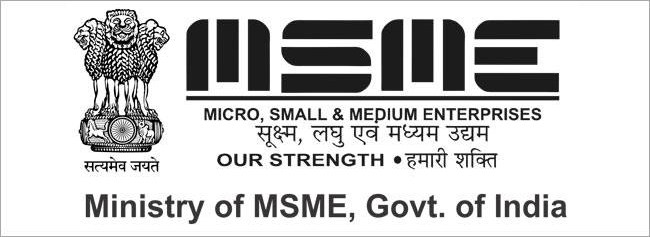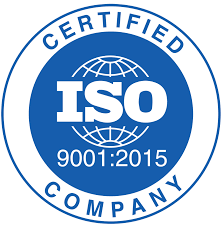API 570 Questions
1) API 570 covers inspection, repair alteration, and re-rating procedures for metallic piping systems that __________.
- a) Are being fabricated
- b) Does not fall under ASTM B31.3
- c) Have been in-service
- d) Has not been tested
2) API 570 was developed for the petroleum refining and chemical process industries.
- a) It shall be used for all piping systems.
- b) It may be used, where practical, for any piping system.
- c) It can be used, where necessary, for steam piping.
- d) It may not be used unless agreed to by all parties.
3) API 570 __________ be used as a substitute for the original construction requirements governing a piping system before it is placed in-service.
- a) Shall not b) Should c) May d) Can
4) API 570 applies to piping systems for process fluids, hydrocarbons, and similar flammable or toxic fluid services. Which of the following services is not specifically applicable?
- a) Raw, intermediate, and finished petroleum products
- b) Water, steam condensate, boiler feed water
- c) Raw, intermediate, and finished chemical products
- d) Hydrogen, natural gas, fuel gas, and flare systems
5) Some of the classes of piping systems that are excluded or optional for coverage under API 570 are listed below. Which one is a mandatory included class?
- a) Water b) Catalyst lines
- c) Steam d) Boiler feed water
6) The __________ shall be responsible to the owner-user for determining that the requirements of API 570 for inspection, examination, and testing are met.
- a) Piping Engineer b) Inspector
- c) Repair Organisation d) Operating Personnel
7) Who is responsible for the control of piping system inspection programs, inspection frequencies and maintenance of piping?
- a) Authorised Piping Inspector b) Owner-user
- c) Jurisdiction d) Contractor
8) An authorised API 570 piping inspector shall have the following qualifications. Pick the one that does not belong in this list:
- a) Four years of experience inspecting in-service piping systems
- b) High school education plus 3 years of experience in the design, construction, repair, operation, or inspection of piping systems
- c) Two year certificate in engineering or technology plus 2 years of experience in the design, construction, repair, operation, or inspection of piping systems.
- d) Degree in engineering plus one year experience in the design, construction, repair, operation, or inspection of piping systems.
9) Risk based inspections include which of the following:
- a) Likelihood assessment b) Consequence analysis
- c) Operating and inspection histories d) All of the above
10) An RBI assessment can be used to alter the inspection strategy provided:
- a) The degradation methods are identified b) The RBI is fully documented.
- c) A third party conducts the RBI d) Both A and B above
11) Which one of the following is not a specific type of an area of deterioration?
- a) Rectifier performance b) Injection points
- c) Deadlegs d) Environmental cracking
12) Injection points subject to accelerated or localised corrosion may be treated as __________.
- a) The focal point of an inspection circuit
- b) Separate inspection circuits
- c) Piping that must be renewed on a regular schedule
- d) Locations where corrosion inhibitors must be used
13) The recommended upstream limit of inspection of an injection point is a minimum of:
- a) 12 feet or 3 pipe lengths whichever is smaller
- b) 12 inches or 3 pipe diameters whichever is smaller
- c) 12 inches or 3 pipe diameters whichever is greater
- d) 12 feet or 3 pipe lengths which is greater
14) The recommended downstream limit of inspection of an injection point is a minimum of
- a) Second change in flow direction past the injection point, or 25 feet beyond the first change in flow direction whichever is less
- b) Second change in flow direction past the injection point, or 25 feet beyond the first change in flow direction whichever is greater
- c) Second change in flow direction past the injection point, or 25 inches beyond the first change in flow direction whichever is less
- d) Second change in flow direction past the injection point, or 25 inches beyond the first change in flow direction whichever is greater.
15) Select thickness measurement locations (TMLs) within injection point circuits subjected to localised corrosion according to the following guidelines. Select the one that does not belong.
- a) Establish TMLs on appropriate fittings within the injection point circuit.
- b) Establish at least one TML at a location at least 25 feet beyond the downstream limit of the injection point.
- c) Establish TMLs on the pipe wall at location of expected pipe wall impingement or injected fluid.
- d) Establish TMLs at both the upstream and downstream limits of the injection point circuit.
16) What are the preferred methods of inspecting injection points ?
- a) Radiography and / or ultrasonics b) Hammer test and / or radiograph
- c) Ultrasonics and / or liquid penetrant d) Liquid penetrant and / or eddy current.
17) During periodic scheduled inspections, more extensive inspection should be applied to an area beginning __________ upstream of the injection nozzle and continuing for at least __________ pipe diameters downstream of the injection point.
- a) 10 inches, 20 b) 12 feet, 10
- c) 12 inches, 10 d) 10 feet, 10
18) Why should deadlegs in piping be inspected?
- a) API 510 mandates the inspection of deadlegs
- b) Acid products and debris build up in deadlegs
- c) The corrosion rate in deadlegs can vary significantly from adjacent active piping.
- d) Caustic products and debris build up in deadlegs.
19) Both the stagnant end and the connection to an active line of a deadleg should be monitored. In a hot piping system, why does the high point of a deadleg corrode and need to be inspected?
- a) Corrosion occurs due to directed currents set up in the deadleg
- b) Erosion occurs due to convective currents set up in the deadleg.
- c) Corrosion occurs due to convective currents set up in the deadleg
- d) Erosion occurs due to directed currents et up in the deadleg
20) What is the best thing to do with deadlegs that are no longer in service?
- a) Ultrasonically inspect often b) Radiograph often
- c) Inspect often d) Remove them
21) What are the most common forms of corrosion under insulation (CUI).
- a) Localised corrosion of non-ferrous metals and chloride stress corrosion cracking of carbon steel.
- b) Localised corrosion of chrome-moly steel and chloride stress corrosion cracking of ferritic stainless steel.
- c) Localised corrosion of carbon steel and chloride stress corrosion cracking of austenitic stainless steel
- d) Localised corrosion of nickel-silicon alloy and caustic stress corrosion of austenitic stainless steel
22) What climatic area may require a very active program for corrosion under insulation?
- a) Cooler northern continent locations. b) Cooler direr, mid-continent locations
- c) Warmer, marine locations d) Warmer drier, desert locations
23) Certain areas and types of piping systems are potentially more susceptible to corrosion under insulation. Which of the items listed is not susceptible to CUI?
- a) Areas exposed to mist over-spray from cooling water towers.
- b) Carbon steel piping systems that normally operate in-service above 250 degrees but are in intermittent service.
- c) Deadlegs and attachments that protrude from insulated piping and operate at a different temperature than the temperature of the active line.
- d) Carbon steel piping systems, operating between 250 degrees F and 600 degrees F.
24) What location is subject to corrosion under insulation and inspection contributes to it?
- a) Locations where pipe hangers and other supports exist.
- b) Locations where insulator has been stripped to permit inspection of the piping.
- c) Locations where insulation plugs have been removed to permit piping thickness measurements.
- d) Locations where there is damaged or missing insulation jacketing.
25) Soil-to-air (S/A) interfaces for buried piping are a location where localised corrosion may take place. If the buried part is excavated for inspection, how deep should the excavation be to determine if there is hidden damage?
- a) 12 to 18 inches b) 6 to 12 inches
- c) 12 to 24 inches d) 6 to 18 inches
26) At concrete-to-air and asphalt-to-air interfaces of buried piping without cathodic protection, the inspector look for evidence that the caulking or seal at the interface has deteriorated and allowed moisture ingress. If such a condition exists on piping systems over __________ years old, it may be necessary to inspect for corrosion beneath the surface before resealing the joint.
- a) 8 b) 5 c) 15 d) 10
27) An example of service-specific and localised corrosion is:-
- a) Corrosion under insulation in areas exposed to steam vents
- b) Unanticipated acid or caustic carryover from processes into non-alloyed piping
- c) Corrosion in deadlegs
- d) Corrosion of underground piping at soil-to-air interface where it ingresses or egresses.
28) Erosion can be defined as:
- a) Galvanic corrosion of a material where uniform losses occur
- b) Removal of surface material by action of numerous impacts of solid or liquid particles
- c) Gradual loss of material by a corrosive medium acting uniformly on the material surface
- d) Pitting on the surface of a material to the extent that a rough uniform loss occurs
29) A combination of corrosion and erosion results in significantly greater metal loss that can be expected from corrosion or erosion alone. This type of loss occurs at:
- a) High-velocity and high-turbulence areas
- b) Areas where condensation or exposure to wet hydrogen sulphide or carbonates occur
- c) Surface-to-air interfaces f buried piping
- d) Areas where gradual loss of material occurs because of a corrosive medium
30) Environmental cracking of austenite stainless steels is caused many times by:-
- a) Exposing areas to high-velocity and high-turbulence streams
- b) Excessive cyclic stresses that are often very low
- c) Exposure to chlorides from salt water, wash-up water, etc.
- d) Creep of the material by long time exposure to high temperature and stress



